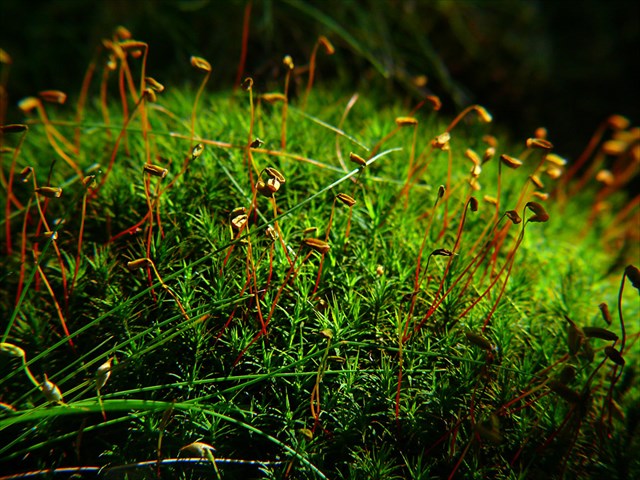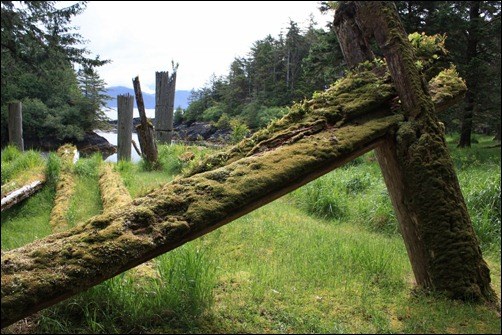Sigiria Forest #5: More Mossy Business
 The cache, a customised bottle top container, is hidden under some twigs in a short stump about 8m off the trail in the north-east corner of the forest.
The cache, a customised bottle top container, is hidden under some twigs in a short stump about 8m off the trail in the north-east corner of the forest.
To reach the cache (refer to trails map in the Gallery or download a Google Earth file of the trails here): after paying the forest entrance fee, from the Parking at the Karura Forest entrance (Gate A) to the east off Limuru road @ S 01 14.826 E 36 49.021 head back out of the gate and down to the main road. Cross this busy road (carefully!) and pick up the access track to the Sigiria Forest a short distance north @ S 01 14.993 E 36 48.931 follow this down a short distance and across the stream to the Sigiria Forest Gate @ S 01 14.804 E 36 48.901 close to the trailhead at Junction 54 From here head right (NNW) up the trail to J55 and left a short distance to the cache location.
Forest Entry Fees (free parking) Open from 06h00-18h00
Citizen (adult/child): Kshs 100/40
Resident: Kshs 200/100
Non-Resident: Kshs 600/300
Permission to place the cache was kindly granted by the Director of the Kenya Forest Service
Mosses comprise ~12,000 species of flowerless plants belonging to the division Bryophyta. Over 500 species have been found (so far) in Kenya (15 new species were reported in 2013 alone!). They are typically 1-10cm (0.4-3.9") tall, but some can be much larger - Dawsonia, the tallest moss in the world can grow up to 50cm (20").
They usually grow close together in clumps or mats in damp or shady locations such as wooded areas and at the edges of streams, but they can grow anywhere in cool damp cloudy climates, and some species are adapted to sunny, seasonally dry areas like alpine rocks or stabilized sand dunes.
They do not have flowers or seeds or vascular tissue and their simple leaves cover the thin stems. At certain times mosses produce spore capsules which are borne aloft on thin stalks.
See here for comprehensive information on mosses.
Traditional uses
Laplanders and other circumpolar people used mosses for bedding.
North American tribal people used mosses for basketry, bedding, wound dressing, diapers, and menstrual fluid absorption.
Circumpolar and alpine people used mosses as insulation in boots and mittens. 
Ötzi the Iceman had moss-packed boots.
Tribes of NE United States and SE Canada used moss to fill chinks in wooden longhouses.
Tribes of the Pacific NW in the United States and Canada used mosses to clean salmon prior to drying, and packed wet moss into pit ovens for steaming camas bulbs. Food storage baskets and boiling baskets were also packed with mosses.
Commercial uses
There is a substantial market in mosses gathered from the wild and used mainly by florists and for home decoration.
Decaying moss in the genus Sphagnum is also the major component of peat, which is 'mined' for use as a fuel, horticultural soil additive, and for smoking malt in the production of Scotch whisky.
Sphagnum moss is harvested while still growing and dried out for use in nurseries and horticulture as a plant growing medium. This practice of harvesting peat moss is quite different from the harvesting of moss peat. The former is done on a sustainable basis so that regrowth is allowed, whereas the latter process causes significant environmental damage as the peat is stripped with little or no chance of recovery.
Sphagnum moss also has a long history of use as a wound dressing as it is highly absorbent and mildly antibacterial. Its use reached a peak during World War I when it was used by both the Germans and the Allies. By the end of the war, the British production of sphagnum dressings was estimated to have been about one million pounds a month.
 Native Americans were one of the first peoples to use Sphagnum for diapers and napkins, which is still done in Canada - see here for an interesting story on 'Campers Pampers'!
Native Americans were one of the first peoples to use Sphagnum for diapers and napkins, which is still done in Canada - see here for an interesting story on 'Campers Pampers'!
In rural UK, the moss Fontinalis antipyretica was traditionally used to extinguish fires as it could be found in substantial quantities in slow-moving rivers and the moss retained large volumes of water which helped extinguish the flames. This historical use is reflected in its specific Latin/Greek name meaning 'against fire'.
In Finland, peat mosses have been used to make bread during famines
The moss Physcomitrella patens is increasingly used in biotechnology, eg. for identification of moss genes with implications for crop improvement or human health, and in the production of complex biopharmaceuticals in special moss bioreactors.
Moss Art !!??
see gallery photos . . .